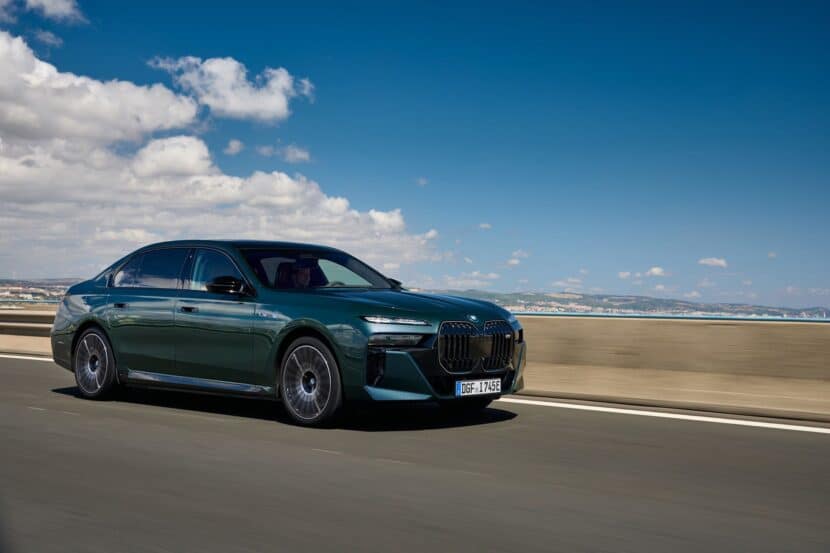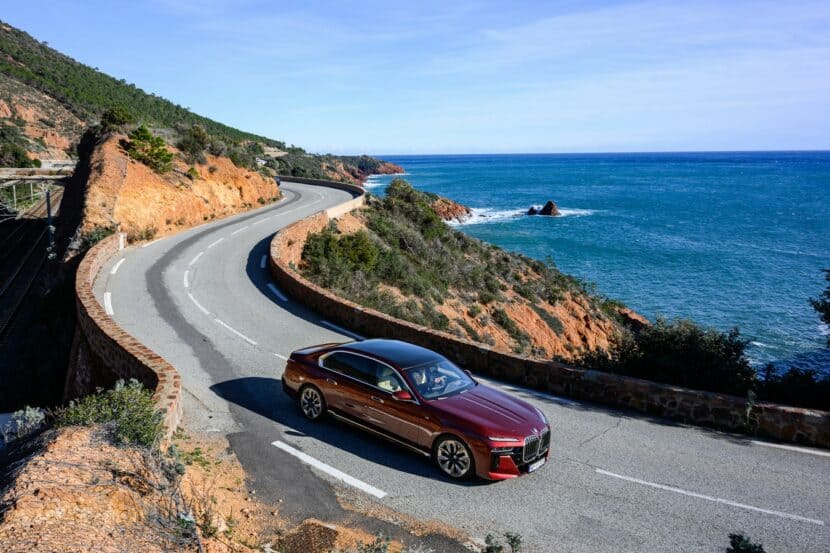Joe Achilles and Australia’s CarExpert teamed up to compare two of BMW’s latest models: the BMW i7 and the 740i. This is essentially a flagship comparison of a 7 Series electric and one powered by a six-cylinder engine. These two models are among the most advanced and sophisticated vehicles in the BMW lineup, but they also have some significant differences. The BMW i7 M70 and the 740i embark on a 540-mile journey from Melbourne to Sydney down under. The goal? Determining which variant makes most sense for the consumer.
Let’s Talk Specs First
The third electric M Performance model – BMW i7 M70 – after the i4 M50 and iX M60 packs more punch than both by offering a colossal 650 horsepower and 811 pound-feet (1,100 Newton-meters) of torque. The latter figure is attainable only when the M Launch Control is activated, or if the M Sport Boost function is turned on. In Sport mode, you still get a massive 748 lb-ft (1,015 Nm).
Mounted in the underbody, the i7 M70 boasts a large battery pack with a 101.7-kWh usable capacity that can be charged DC at up to 195 kW. In this case, it takes 34 minutes to charge from 10 to 80 percent. Thanks to a 32 Amps onboard charger, the luxury limousine is capable of AC charging at up to 22 kW as standard in Europe and 11 kW in the United States. With 21 inch wheels, the BMW i7 M70 has an EPA rating of 291 miles. The European WLTP standard is a lot more generous: 303 – 348 miles (488 – 560 kilometers).
The BMW 740i uses a revised version of the B58 turbo-six under the hood, now making 375 horsepower and 383 pound-feet of torque. BMW says the zero to 60 mph sprint occurs in 5.2 seconds, which feels about accurate from the driver’s seat. By now, most BMW enthusiasts are familiar with the B58 engine, and its familiar charms hold up well here: plenty of power in the mid-range and lots of torque down low. Of course, it’s a gasoline car so charging is not an issue.
How Do They Compare?
During their journey, the BMW i7 M70 required one extended stop which could be replaced by two slightly shorter breaks to recharge its high-voltage energy storage unit. Instead, the BMW 740i completed the entire journey without any additional refueling. At the 610 km mark (457 miles), the BMW 740i average 6.8 liter per 100 km (34.5 mpg) compared to 22.4 kWh per 100 km which is roughly 93.49 MPGe.
Overall. the i7 M70 extended the 873 km (542-mile) trip by approximately two hours and 10 minutes, while the internal combustion engine (ICE)-powered car needed only a brief five-minute stop at a gas station. Average sped for both cars? Around 110 km/h. The total EV cost was $131.92 (Australian dollars) compared to $117.88 for the 740i. So with these numbers in mind, which variant would you buy?


